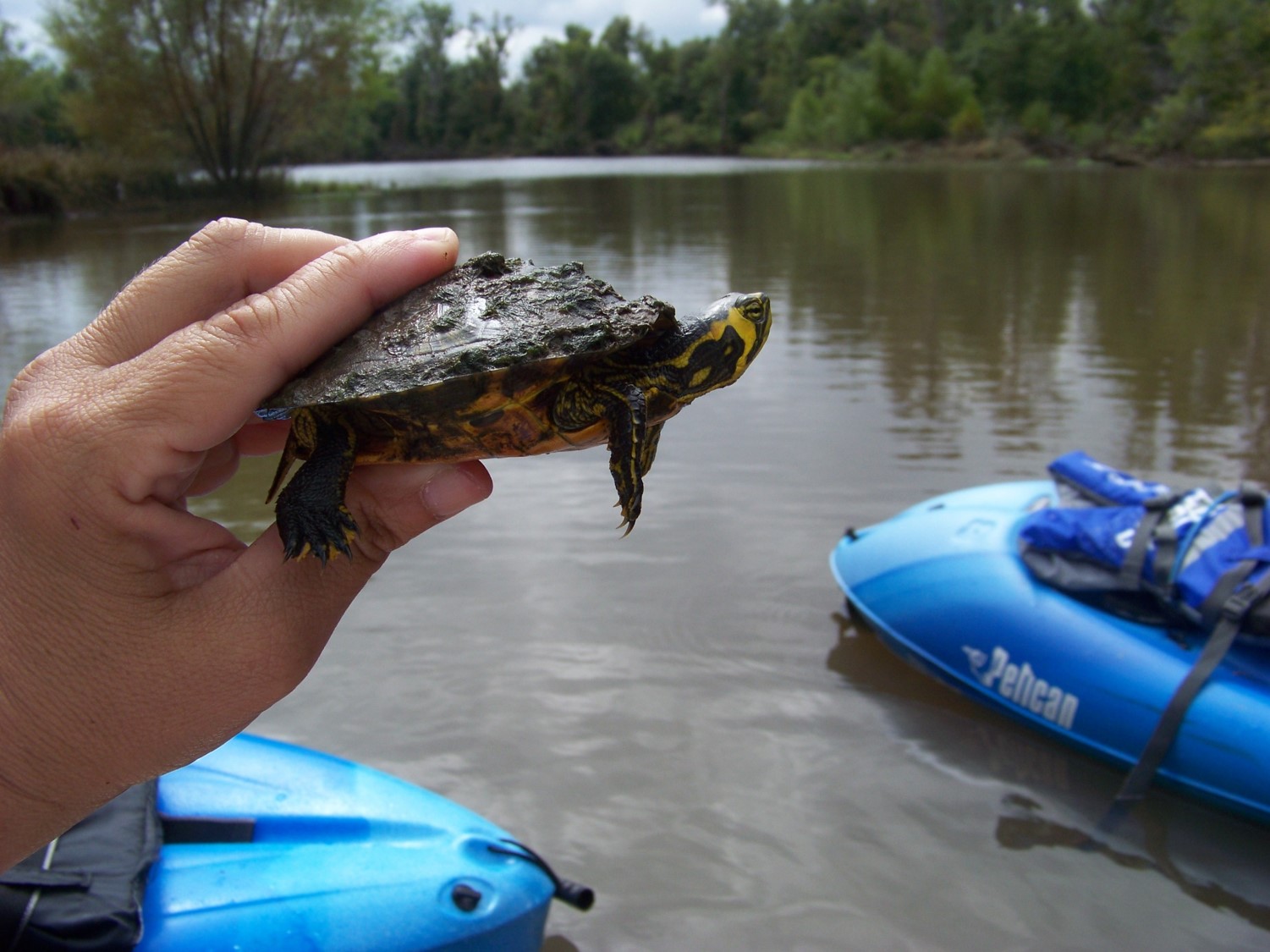They call it a slider…
Maybe because they slide off a tree trunks into the water? Honestly, I really don’t know – but sliders it is.
They are very common pond turtles all across the eastern and mid-west portions of the United States reaching as far west as New Mexico. Within this range there are two subspecies: The Yellow-bellied Slider (Trachemys scripta scripta) and the Red-Eared Slider (Trachemys scripta elegans). In Florida, only the yellow-bellied is native and it is only found in northern Florida. The red-eared slider is found throughout our state but is non-native and considered by some to be invasive.

The distinct yellow patch on the cheek helps identify the yellow-bellied slider.
Photo: Molly O’Connor
Sliders are mid-sized emydid turtles and found in almost any type of water body. They prefer water bodies with slow currents, lots of sun, and plants – but have been found in retention ponds, rivers, golf courses, you name it. The shell (carapace) is rounder than the other common pond turtle called the cooter. Their shells are usually between 3 – 11 inches long, with females being larger. They have a slight keel running down the middle of their shell and the back margin is slightly “toothed” or serrated. The “belly” shell (or plastron) is usually yellow (source of their common name) as juveniles and forms dark blotches with age. The body is a dark green or black color with fine yellow stripes. The yellow-bellied slider will have a large yellow patch in the cheek area, which is easy to see from a distance. The red-eared has a small red patch behind and above the ear area. The carapace will be green as a juvenile and become darker as an adult. There will be beautiful patterns of yellow in the shell that fade with time. Older sliders will have faded shells all together and the yellow markings on the head and body will fade as well. They call this a melanistic phase.
Sliders are most active during daylight hours and are known to spend some time on land. They can be seen frequently basking on tree stumps and logs and can be aggressive towards each other. Red-eared sliders are known to be aggressive in aquaria.
They are omnivores. Young sliders are carnivorous feeding on small worms and insects. The adults switch to plant diet. Many sliders are shot, or destroyed in other ways, by locals thinking they will eat all the fish in their ponds – they will not.
Males are usually smaller, typically not having carapace lengths greater than 10 inches. Mature males will have extended “fingernails” or claws on their forelimbs. Mating takes place in the water and females have been known to travel up to 1500 feet from the water seeking good nesting habitat. Once found, they may dig a couple of “trial” nests before laying 5-20 eggs in a real one. They lay up to 3 active nests/nesting female/year.
Numerous animals will consume the turtle eggs and hatchlings. Adults have been consumed by alligators, minks, raccoons, otters, and gars.
Within their range, they are considered common but are still protected by Florida law. You may not have more than one slider/person/day from the wild and cannot use for commercial purposes. The red-eared slider is considered non-native and it is illegal to release non-natives into the local environment.
These are beautiful turtles and we hope that if you have not already seen one, you will get to soon.
- Rattlesnakes on Our Barrier Islands; Part 4 – Thermoregulation - December 29, 2025
- Rattlesnakes on Our Barrier Islands; Part 3 – Envenomation - December 22, 2025
- St. Joe Red Tide Claiming Terrapins - December 15, 2025
